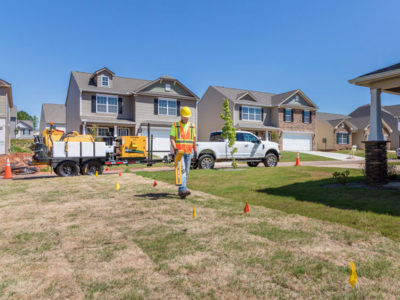Making the call to 811/One Call and waiting the allotted amount of time before getting to work is undoubtedly standard operating procedures (SOP) for utility contractors. However, those steps alone do not necessarily prevent crews from striking a buried utility line. Missed and mislocated utilities are a tremendous concern for everyone. There are significant costs and safety concerns involved when strikes occur. Did you know that according to the Common Ground Alliance 2018 DIRT Annual Report, there were 440,749 utility strikes and near misses reported in the U.S. and Canada? The top three root causes of the reported incidents were related to excavating, notification and locating issues. The diligence of making the call to 811/One Call should set your mind at ease about an incident being categorized as “Notification Not Made,” but a call won’t necessarily prevent your next job from becoming a statistic for the “Excavating Issues” and “Locating Issues” categories.
To help keep your team’s work from showing up on the Dirt Annual Report, you should be using utility locators to verify locates. Here’s why:
1) Helping prevent utility strikes is everyone’s responsibility
When crews show up to the job and see an easement with multicolored flags and paint lines, that usually means it’s time to get to work digging or drilling. However, just because the locates appear to be done doesn’t necessarily mean every single one of them is accurate. Helping prevent utility strikes is everyone’s job, so your team should double-check the locates. Get the utility locator out and do a pass yourself. You should also keep in mind that there are many potential utilities — like sprinkler systems, buried electrical lines, sewer and even gas lines on private property — that the local utility locator may not be aware of or responsible for. Don’t let the bit of your drill, teeth of your excavator or edge of your shovel be what discovers where there is more buried than meets the eye. Do the work. Then after you’ve swept the area with a utility locator yourself, make sure to pothole any utilities that are near your installation path using soft digging methods like vacuum excavation.
2) Work efficiency for peace of mind
Every crew wants to work efficiently and get done with the current job and on to the next. However, when you sit back and think about the jobs that took too long — the marathon projects — did those jobs stretch out because your team didn’t work efficiently or because mistakes (your team’s or someone else’s) were made along the way? Working efficiently happens when every step of your SOP is carried out thoroughly and correctly, and double-checking locates should be on that list. Work comes to a complete standstill when a strike happens, so you’re much better off spending a little time on the front end locating than you are having hours or days of decreased productivity because your crew is shut down while the details of a utility strike get sorted out.
3) Financial and company reputation
If a crew is found to be at fault for striking a utility, there can be steep financial ramifications and the contractor’s reputation certainly suffers. However, even if a contractor isn’t at fault, there can still be financial and reputation losses. Striking a utility temporarily shuts a project down while damage is being assessed. Your team is probably still on the clock for part, if not all, of that time. You’re out that expense and the time it takes to get a job back on track. Also, crew members and customers tend to talk about utility strikes. Even if your company isn’t at fault, future contracts can still be impacted negatively. One of the best ways to stop the chatter is to help avoid the possibility of your team being involved with an incident in the first place by double-checking utility locates.
Choosing the right utility locator
Now that you know why you should be checking locates, make sure you’re using the right locator and your team has been trained to use it. That’s where your local Vermeer dealership can help. They can set you up with a Vermeer Verifier G3® utility locator and help train your team on how to use it.
For more information about Vermeer locating equipment, contact your local Vermeer dealer.
McLaughlin Group, Inc. reserves the right to make changes in engineering, design and specifications; add improvements; or discontinue manufacturing at any time without notice or obligation. Equipment shown is for illustrative purposes only and may display optional accessories or components specific to their global region. Please contact your local Vermeer dealer for more information on machine specifications.
Vermeer and the Vermeer logo are trademarks of Vermeer Manufacturing Company in the U.S. and/or other countries.
© 2019 McLaughlin Group, Inc. All Rights Reserved.
